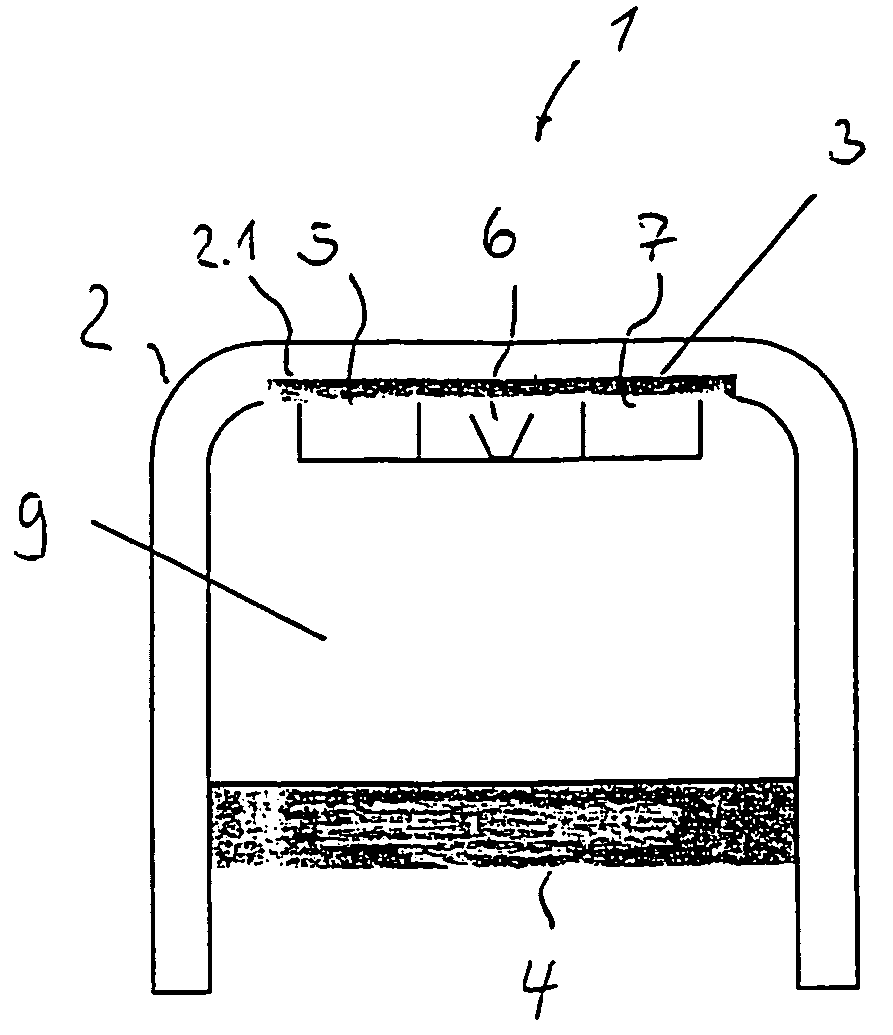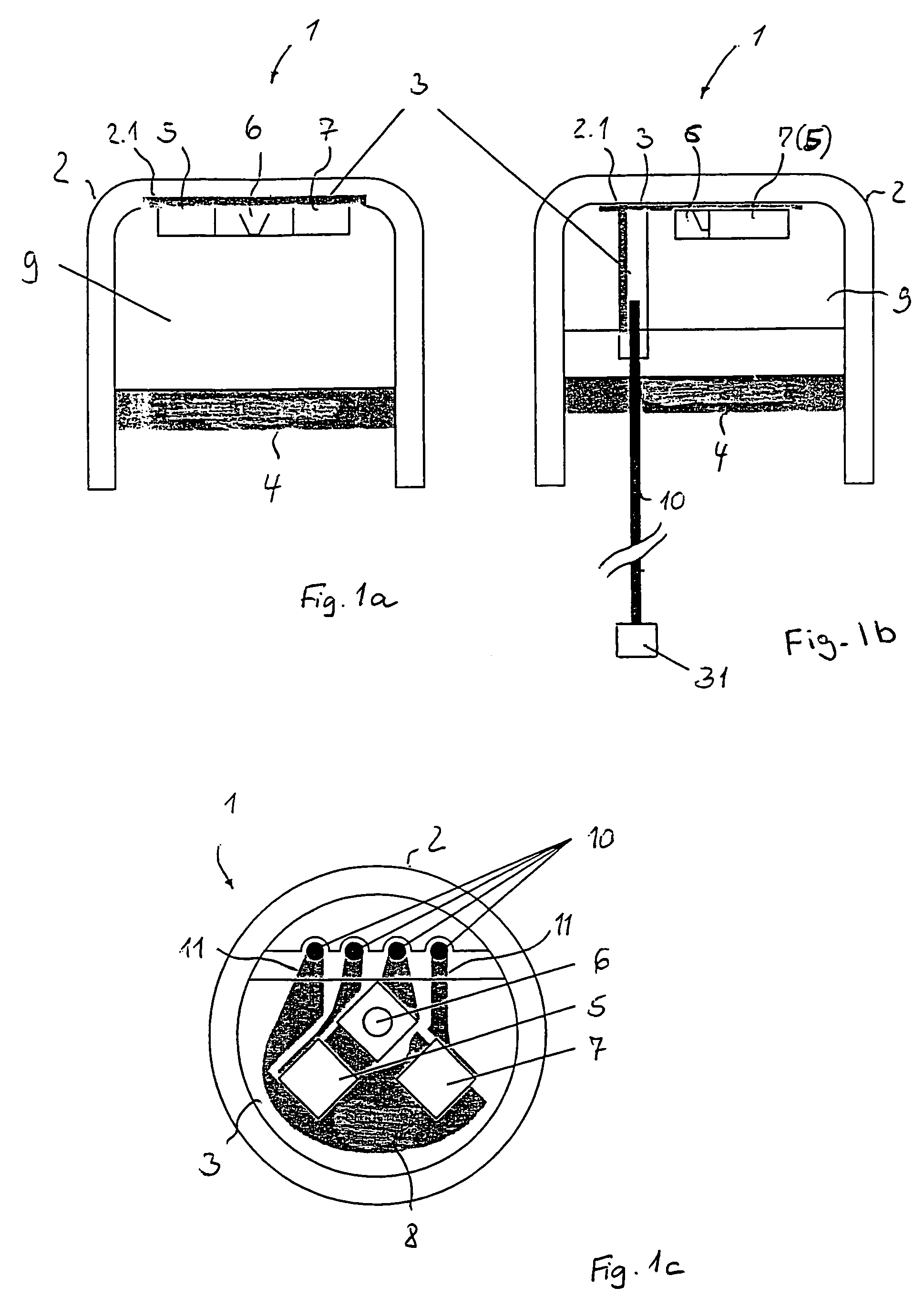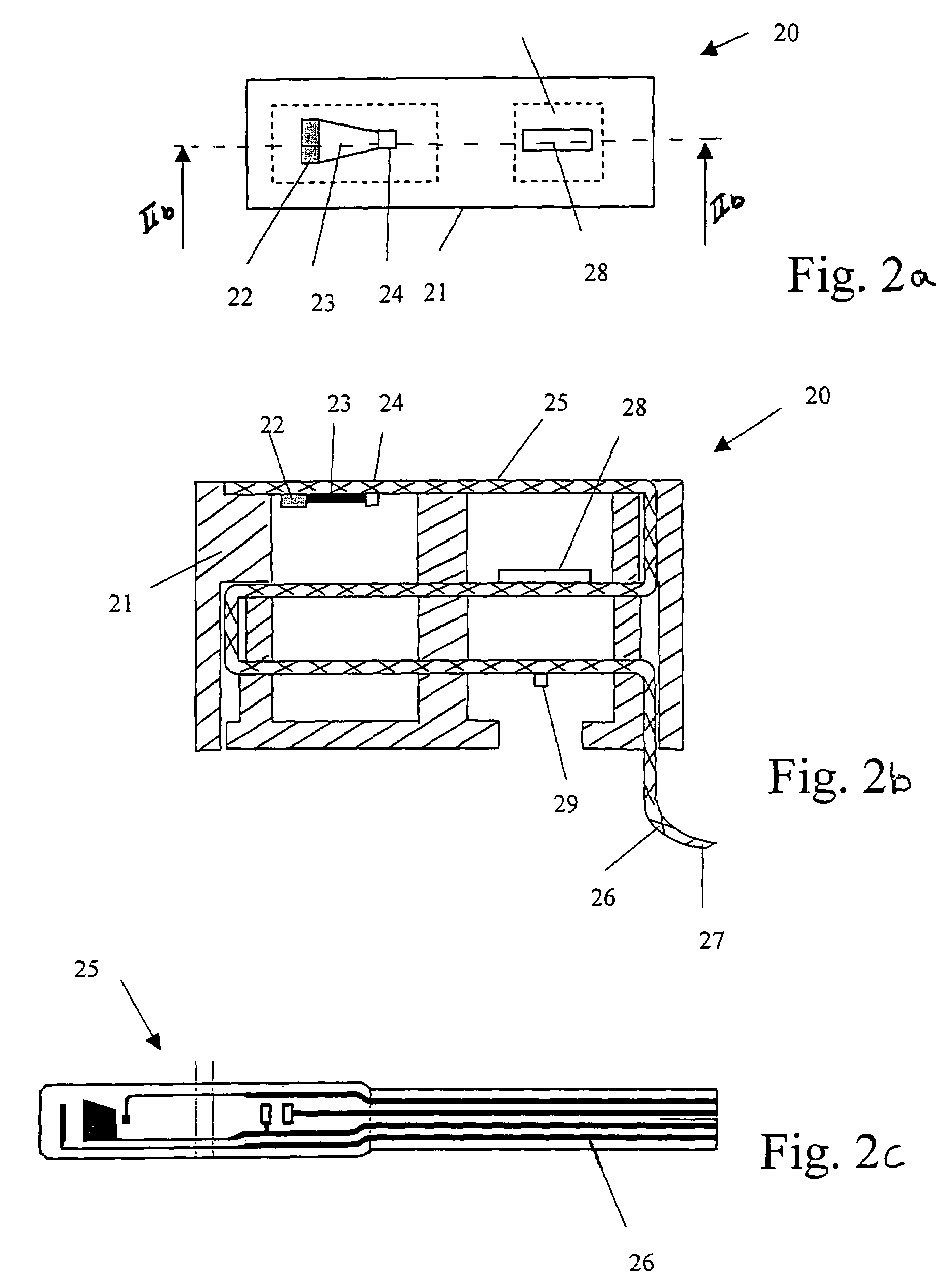Method for determining an interior temperature of a passenger area of a motor vehicle, arrangement for execution of the method, and a temperature sensor
- Summary
- Abstract
- Description
- Claims
- Application Information
AI Technical Summary
Benefits of technology
Problems solved by technology
Method used
Image
Examples
Embodiment Construction
[0031]In FIGS. 1a–c, a compact sensor 1, produced with MID technology, is illustrated in various views as an Incar-sensor or a temperature sensor. FIG. 1a shows the sensor in a front view, FIG. 1b in a side view, and FIG. 1c in a top view, each of which are cross-sectional views.
[0032]Sensor 1 has a housing 2, which in its top part has, for example, a foil 3, which functions as a substrate of the sensor 1. Towards its bottom, the housing 2 can be closed off with a casting compound 4. On foil 3, in a preferred embodiment, a heat element 5, for example a heat resistor, a solar sensor 6, for example a photo sensor, as well as a NTC element 7 are provided and are attached from the rear. The foil 3 is made of PC (polycarbonate) or macrolon, for example. On the foil 3, located between the heat element 5 and the NTC 7, there are copper or silver tracks to create an impulse damping segment 8. In the housing 2, between the foil 3 and the components 5, 6, 7, and the casting compound 4, there ...
PUM
 Login to View More
Login to View More Abstract
Description
Claims
Application Information
 Login to View More
Login to View More - R&D
- Intellectual Property
- Life Sciences
- Materials
- Tech Scout
- Unparalleled Data Quality
- Higher Quality Content
- 60% Fewer Hallucinations
Browse by: Latest US Patents, China's latest patents, Technical Efficacy Thesaurus, Application Domain, Technology Topic, Popular Technical Reports.
© 2025 PatSnap. All rights reserved.Legal|Privacy policy|Modern Slavery Act Transparency Statement|Sitemap|About US| Contact US: help@patsnap.com



